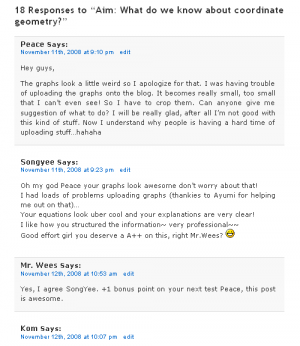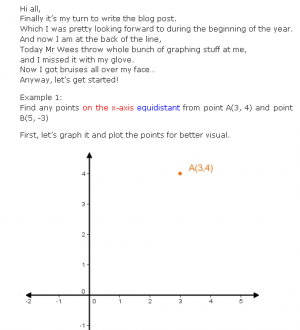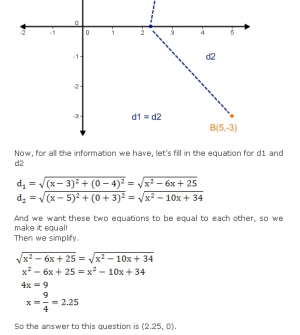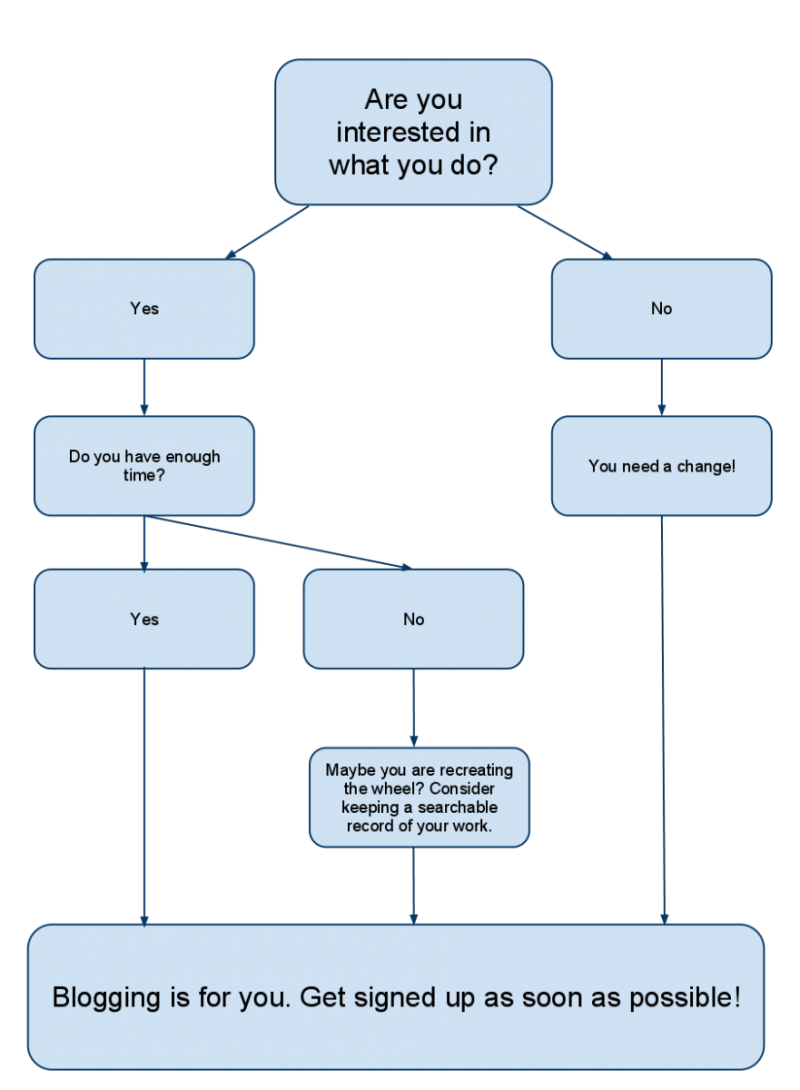 Something I have been doing for the past three years now is using a blog with my classroom. I have developed my practices with the blog over time and so far here are some of the things I have been doing with it.
Something I have been doing for the past three years now is using a blog with my classroom. I have developed my practices with the blog over time and so far here are some of the things I have been doing with it.
The first thing for which I used my blog was to distribute information to the students, and provide announcements for the class. Some of the things I might announce would be dates of upcoming tests, due dates for assignments, and upcoming topics. I also used the blog originally as a way to provide links for resources, intended to be used in class. This way students would not have to type in any lengthy URLs and could just click to get straight to the online resource. Occasionally I would also upload a file to our class blog and expect the students to be able to download it for access.
Now that I have been using a blog with my classroom for a few years, I have found some more sophisticated ways of using it, which I want to discuss here.
One immediate change I made was to transfer the load of publishing to the blog with my students. In the first year that I tried this, what happened was that one of my classes, an advanced grade 10 math class, posted daily summaries of what happened in class to the math blog. This responsibility rotated around the class and when each student had posted their blog, they chose the next person.
This worked reasonably well, since occasionally students would come to class with questions they had discovered when reading the blog. They would also occasionally comment on each other’s summaries and I hope that most of the students read each other’s posts.
The next step I took was logical, having tested out blogging with a class, I decided to try it with all of my classes. I actually took the time to install the blogging software myself, hosted on my school’s server, so that I would have greater control over the process. I wanted to be able to easily administrate the students’ accounts and be able to assist them with common problems, like forgetting their passwords. I also made sure that posting to the blog was a part of the students’ grades, given its growing importance.
 As soon as I did this, it became clear to me that not all of my students were reading the blog on a regular basis. So this year I implemented another change, students would be marked on their full participation in the classroom blogging. Not only would they be rotating through responsibility for creating summaries of that day’s class, they would have to post comments on the summaries for other student’s summaries. This way I could guarantee that students were at least reading each other summaries. The comments students have produced have mostly been really appropriate and high quality.
As soon as I did this, it became clear to me that not all of my students were reading the blog on a regular basis. So this year I implemented another change, students would be marked on their full participation in the classroom blogging. Not only would they be rotating through responsibility for creating summaries of that day’s class, they would have to post comments on the summaries for other student’s summaries. This way I could guarantee that students were at least reading each other summaries. The comments students have produced have mostly been really appropriate and high quality.
 When I added the commenting on each other’s posts, something fascinating happened. The quality of the blog summaries improved. Students were aware that I grade the quality of the blog, but that I use a pretty forgiving rubric. If students complete their summary, and it makes sense, they get full marks for participation. What has obviously driven the improvement in their posts has been the awareness that their peers are reading them.
When I added the commenting on each other’s posts, something fascinating happened. The quality of the blog summaries improved. Students were aware that I grade the quality of the blog, but that I use a pretty forgiving rubric. If students complete their summary, and it makes sense, they get full marks for participation. What has obviously driven the improvement in their posts has been the awareness that their peers are reading them.
I think a second driving factor in the improvement in the quality of the posts has been a bit of competition, particularly among the stronger mathematics students. They are basically competing to see who can create the best post.
 Some of the posts, especially recently have been exceptional. Students have become more comfortable with the format and are incorporating humor and more media into their posts. Graphs and properly formated equations have almost become an expectation for their posts.
Some of the posts, especially recently have been exceptional. Students have become more comfortable with the format and are incorporating humor and more media into their posts. Graphs and properly formated equations have almost become an expectation for their posts.
The ways students have been creating the graphs and equations have been quite creative. Some students find images from other websites online, and use these instead. Some students take the time to create their images instead using programs like Microsoft Paint, Adobe Photoshop, and Geogebra. For the creation of the equations, most students have been using my built in Equation parser (which means learning a little bit of Latex). The equations shown in the pictures here are actually created in Microsoft Word, and then exported to pictures using a lengthy process.
I’m not sure what the next step is. I know I need to collect some information. At some point near the end of the semester, I plan on collecting some anonymous data from the students to try and answer the following questions.
- How long, on average, does it take you to create a summary?
- How often do you check the blog to see if any new summaries are up?
- Do you read the summaries from any of the other classes?
- Have you felt any of the comments have been too critical?
In summary, blogging with your students as a class can be an effective way to increase their retention of your material. They may end up learning some of the material from their peers because of the differences in how it is explained. Your students will also end up having to view your classroom material in a different format, so it will activate a different part of their brain, and so some students will benefit from this experience (think Howard Gartner’s multiple intelligences). Your students will also be likely to learn some valuable technical skills from the experience. Finally, your students may just enjoy the experience, which will make them enjoy (and remember) your class for a bit longer.


 Something I have been doing for the past three years now is using a blog with my classroom. I have developed my practices with the blog over time and so far here are some of the things I have been doing with it.
Something I have been doing for the past three years now is using a blog with my classroom. I have developed my practices with the blog over time and so far here are some of the things I have been doing with it. As soon as I did this, it became clear to me that not all of my students were reading the blog on a regular basis. So this year I implemented another change, students would be marked on their full participation in the classroom blogging. Not only would they be rotating through responsibility for creating summaries of that day’s class, they would have to post comments on the summaries for other student’s summaries. This way I could guarantee that students were at least reading each other summaries. The comments students have produced have mostly been really appropriate and high quality.
As soon as I did this, it became clear to me that not all of my students were reading the blog on a regular basis. So this year I implemented another change, students would be marked on their full participation in the classroom blogging. Not only would they be rotating through responsibility for creating summaries of that day’s class, they would have to post comments on the summaries for other student’s summaries. This way I could guarantee that students were at least reading each other summaries. The comments students have produced have mostly been really appropriate and high quality. When I added the commenting on each other’s posts, something fascinating happened. The quality of the blog summaries improved. Students were aware that I grade the quality of the blog, but that I use a pretty forgiving rubric. If students complete their summary, and it makes sense, they get full marks for participation. What has obviously driven the improvement in their posts has been the awareness that their peers are reading them.
When I added the commenting on each other’s posts, something fascinating happened. The quality of the blog summaries improved. Students were aware that I grade the quality of the blog, but that I use a pretty forgiving rubric. If students complete their summary, and it makes sense, they get full marks for participation. What has obviously driven the improvement in their posts has been the awareness that their peers are reading them. Some of the posts, especially recently have been exceptional. Students have become more comfortable with the format and are incorporating humor and more media into their posts. Graphs and properly formated equations have almost become an expectation for their posts.
Some of the posts, especially recently have been exceptional. Students have become more comfortable with the format and are incorporating humor and more media into their posts. Graphs and properly formated equations have almost become an expectation for their posts.